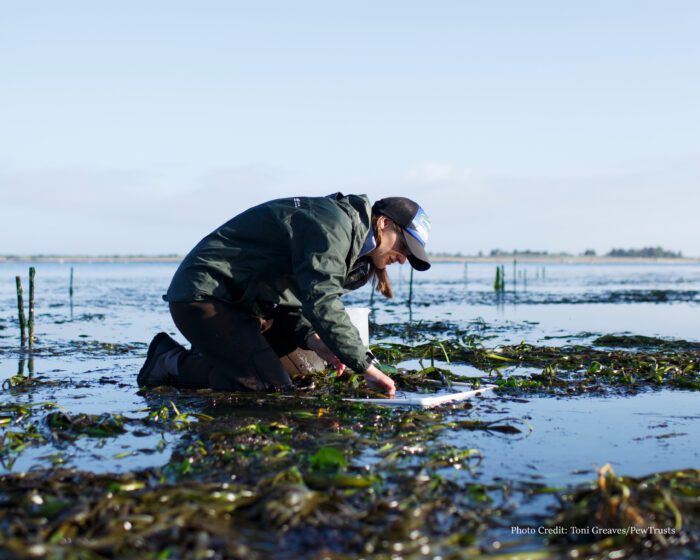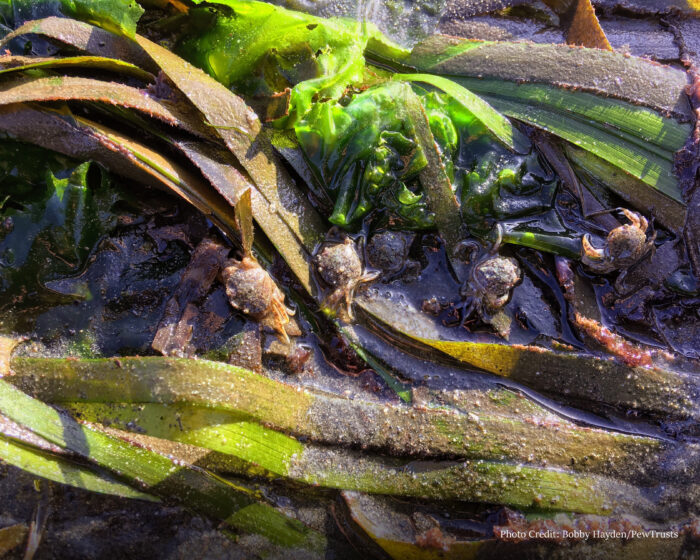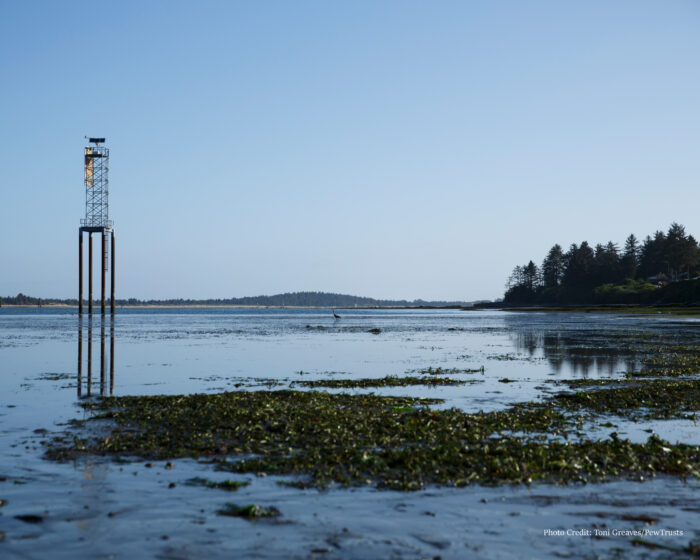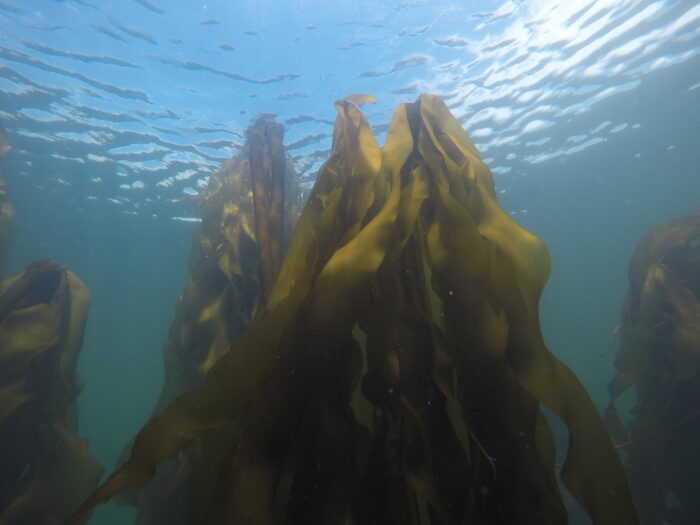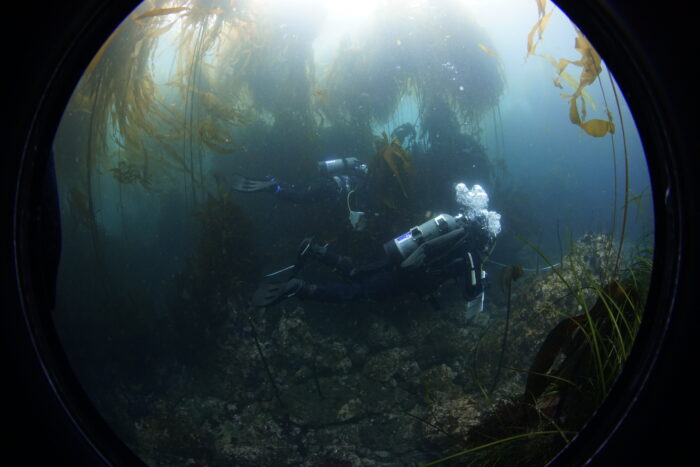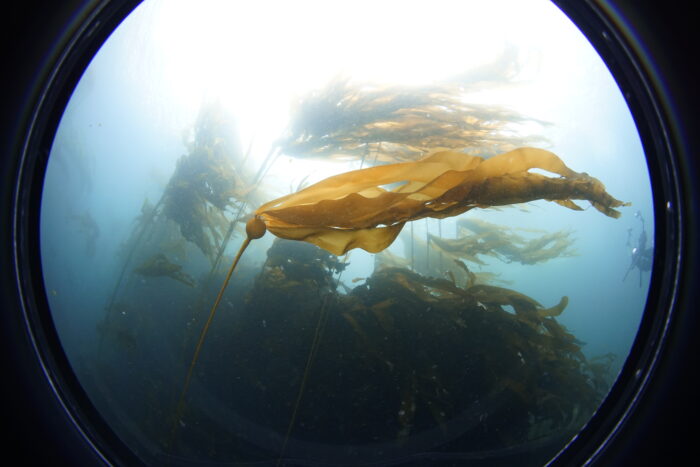Nearshore Submerged Aquatic Vegetation Evaluation (Nearshore SAVE) Project

About
The Pew Charitable Trusts, the National Oceanic and Atmospheric Administration’s National Marine Fisheries Service (NOAA Fisheries), and the National Marine Sanctuary Foundation (the Foundation) have joined forces on the Nearshore Submerged Aquatic Vegetation Evaluation (Nearshore SAVE) Project to help natural resource managers improve the application of science-based tools used to inform conservation and management of nearshore ecosystems. Ultimately, this effort will bring transparency and consistency to the way managers assign ecological value to nearshore habitats, helping to protect and restore submerged aquatic vegetation such as kelp and seagrasses.
Partners will compile, review, refine, and standardize tools to assess ecological value of nearshore habitat. This will help ensure that protected and managed species, from salmon to groundfish to shellfish, have the healthy habitat they need to thrive, even in the face of climate change.
The partnership involves four main activities:

Reviewing the scientific literature on nearshore marine habitat evaluation methods

Surveying natural resource managers and partners for evaluation frameworks or tools currently used, and tools they’d like to have

Engaging partners through listening sessions and workshops, then refining tools to meet specific needs

Providing guidance to managers and decision makers on the use of habitat evaluation tools
FAQs
Why are we compiling, reviewing, refining, and standardizing tools used to assess the ecological value of marine nearshore and submerged aquatic vegetation habitat?
Natural resource agencies have a mandate to review land-use activities in coastal and nearshore environments. The agencies may require measures to avoid and minimize adverse impacts to these habitats. Or they may recommend or require compensatory mitigation (or offsets) and restoration when negative impacts or injuries are unavoidable.
But before compensatory mitigation can happen, we need a way to quantify the habitats’ value to protected and managed species. Unfortunately, we are limited by a lack of data, untested or unrecognized assumptions, and a need for peer-reviewed decision frameworks.
Therefore, we set out to examine our current suite of tools and approaches for valuing habitat to improve their ecological effectiveness and the efficiency of collaborative, science-based decision-making.
We need your experience and expertise to maximize the success and impact of our project. Are you interested in learning more and getting involved? Here are a few ways to engage:
Do you use tools for marine nearshore habitats and submerged aquatic vegetation (SAV) habitat assessments? Do you collect or process information used in a marine nearshore habitat assessment tool? Can you suggest colleagues on the West Coast whom we should ask about their tools in the next stage of our project? If yes to any of these, please provide your contact information here. We will send you a survey link when we launch the survey.
Also follow the link above if you want to receive periodic updates and announcements from the Nearshore Submerged Aquatic Vegetation Evaluation (Nearshore SAVE) project.
Some of us are already using tools to assess the ecological value of marine nearshore and SAV habitat, e.g., Habitat Equivalency Analysis (HEA), Puget Sound Nearshore Habitat Conservation Calculator, and the California Eelgrass Mitigation Policy (CEMP) tool. Do these tools need to be improved?
Existing tools use the best available science to support decision-making by natural resource agencies. We are compiling, reviewing, refining, and standardizing those tools to improve their performance by identifying data gaps and clarifying their scientific assumptions. Identifying data gaps will help us update or develop new tools. Defining and communicating how scientific assumptions affect a tool may improve the consistent application of these tools.
There is currently (as of December 2022) an independent science review underway of the Puget Sound Nearshore Habitat Conservation Calculator facilitated by NOAA’s Office of Science and Technology. This project does not replace that independent science review, and will utilize and be consistent with that review.
I use tool(s) for marine nearshore and SAV habitat assessments, and they are meeting my needs. Will standardization of methods take away my ability to develop new tools?
No. Our aim is to improve projects’ conservation outcomes and regulatory efficiency, both of which affect high-value nearshore and SAV habitats. We are communicating and working with partners to characterize methods for addressing impacts on the marine nearshore, particularly SAV habitats. We will evaluate how we apply assumptions, set priorities for addressing research gaps, and define where and how tools work. Evaluating decision-making tools will help improve transparency and identify room for improvement. Reviewing existing tools will also help us use the best available science in these tools by identifying new applicable scientific research. While this project will not develop new tools, we intend to identify where new tools are needed and provide recommendations accordingly.
How will improved tools help streamline SAV and marine nearshore habitat assessment work?
We may learn how additional information or different tools can improve habitat assessments. These improvements will likely translate into better outcomes for nearshore SAV habitats and increased tool usability. Ultimately, these improvements should lead to increased efficiencies in our daily work. For example, a well-vetted and accepted tool, applied consistently, should reduce future regulatory review time by improving transparency and efficiency.
Will this project help with nearshore marine and SAV habitat assessments in regions outside the West Coast?
Our initial project focus is the West Coast. However, we are casting a wide net to consider all appropriate tools nationally. Some national practitioners already use West Coast tools (e.g., HEA). Evaluating nearshore habitat assessment tools on the West Coast will provide a strong foundation and potential approach for improving conservation outcomes and regulatory efficiencies in other regions.
Past Events
The National Marine Sanctuary Foundation’s conservation team in partnership with NOAA Fisheries hosted a virtual workshop to bring together stakeholders to strengthen the science, collaborative decision-making tools, and approaches that contribute to the management and conservation of nearshore habitats that support foundational submerged aquatic vegetation (SAV; kelps and seagrasses). The date and time of the workshop was:
Thursday, October 17th from 10AM-12PM Pacific Time – Virtual via the Webex platform.
We encourage your participation even if you did not attend the in-person workshops in Sausalito, CA and Olympia, WA in May and June 2024.
Nearshore SAVE Project Goal: Strengthen the decision-making tools and approaches that contribute to the conservation and management of nearshore habitats that support foundational submerged aquatic vegetation.
Workshop Objectives:
- Share content (covered at in-person workshops);
- Gain feedback (covered at in-person workshops);
- Identify areas of collaboration (focus of upcoming online workshop).
At the workshop, we focused on that third objective and discussing:
- A brief synopsis of our two in-person workshops
- A summary of recurring themes and needs from members of the greater SAV community that came up at the in-person workshops. During the online workshop, we plan to identify our collective priorities. So, come prepared to indicate your role (scientist, manager/regulator, etc.) and to vote on your priorities in SAV conservation.
- A subset of those themes and needs that the Nearshore SAVE team has considered as actionable priorities within the scope of our project, which we will discuss at the online workshop;
For more information, please email jhale@marinesanctuary.org.
The Nearshore SAVE team convened with colleagues at two in-person workshops in May and and June 2024 to strengthen the science, collaborative decision-making tools, and approaches that contribute to the management and conservation of nearshore habitats that support foundational submerged aquatic vegetation (SAV; kelps and seagrasses).
These workshops built off our 2023 webinars that shared the initial results from the survey of assessment tools for marine nearshore SAV habitats used at NOAA Fisheries. We shared our ‘nearshore tools’ literature review that we hope will be beneficial to tool users, and provided a preliminary assessment of the habitat evaluation tools currently used at NOAA Fisheries.
The primary objectives of the workshops were to:
- Share content regarding partnership products (e.g., literature review, tools survey results, science publications and input)
- Gain feedback from participants on their goals/objectives, and their understanding of tools currently in use
- Develop community of practice regarding tools and associated knowledge to improve shared governance and management
Team Members
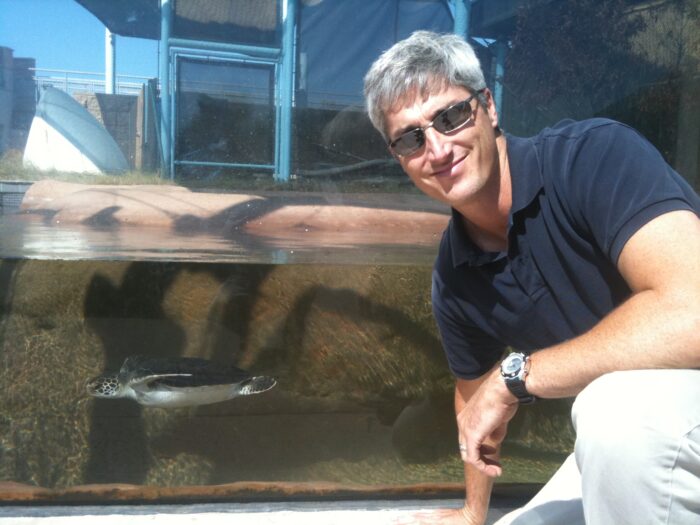
Bryant Chesney
Senior Marine Habitat Resource Specialist, NOAA National Marine Fisheries Service (NMFS) West Coast Region

Elizabeth Gaar
Habitat Program Leader and Senior Policy Advisor for Protected Resources, NOAA Fisheries West Coast Region
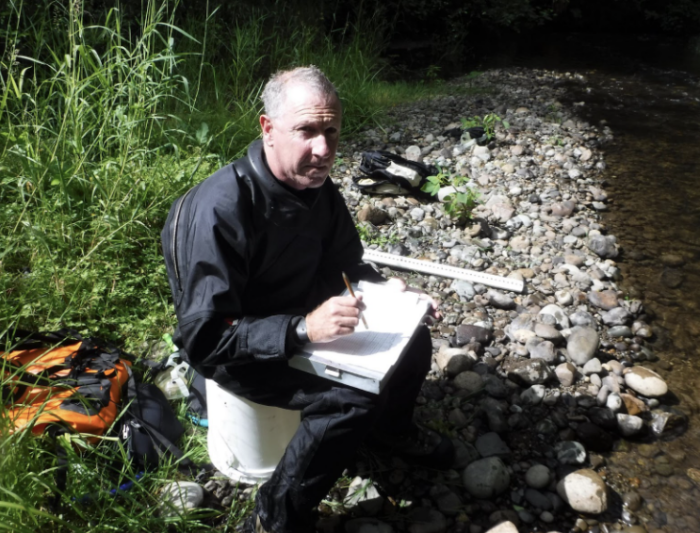
Peter Kiffney (he/him)
Research Fish Biologist, Northwest Fisheries Science Center
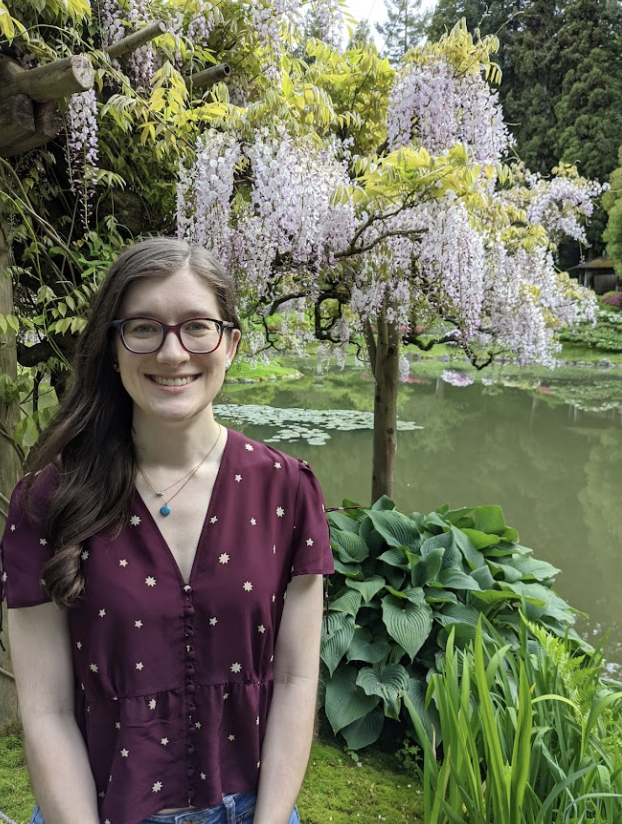
Jessie Hale (she/her)
Postdoctoral Fellow with the National Marine Sanctuary Foundation, in support of NOAA Fisheries (embedded at the Northwest Fisheries Science Center)
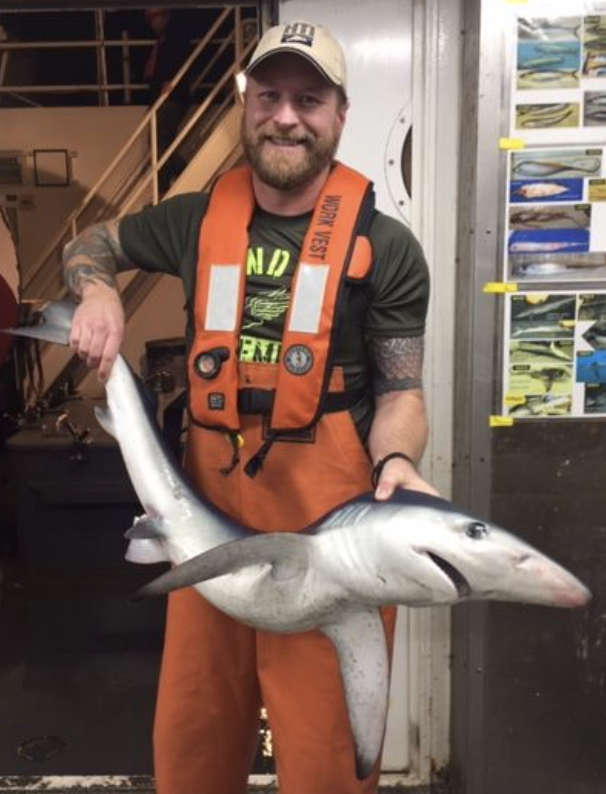
Dayv Lowry
ESA Assessment Biologist and Rockfish Recovery Coordinator, NOAA Fisheries, West Coast Region, Protected Resource Division
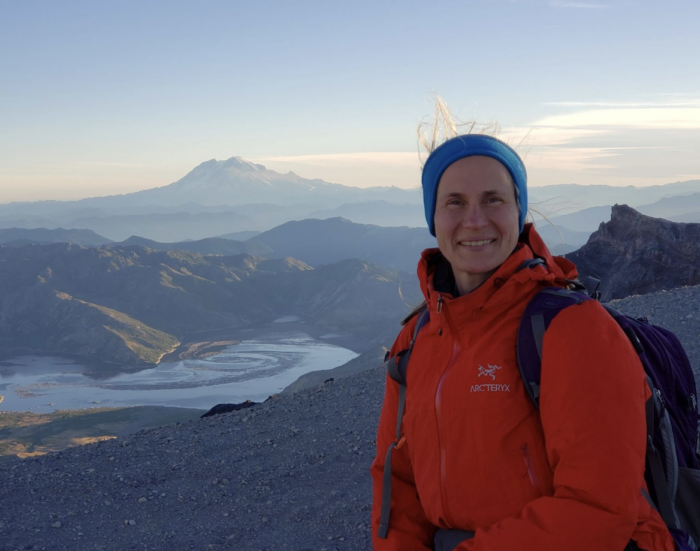
Stephanie Ehinger
Biologist with the National Marine Fisheries Service, West Coast Region, Central Puget Sound Branch, Habitat Division.
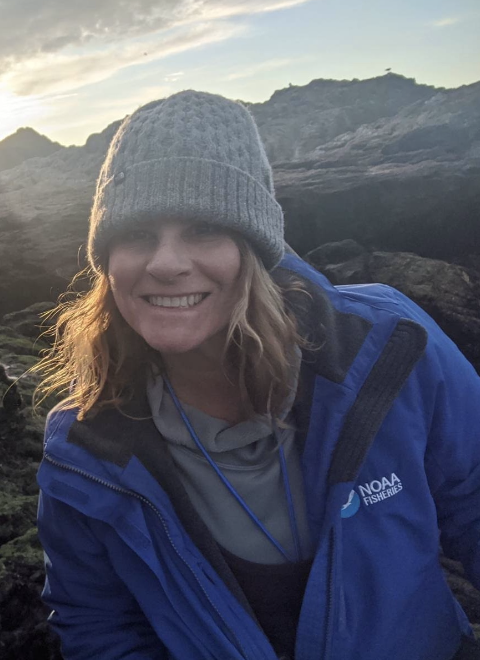
Natalie Cosentino-Manning
Marine Habitat Restoration Specialist, National Marine Fisheries Service, Office of Habitat Conservation, Restoration Center, Santa Rosa CA

Steve Marx
Senior Officer, Pew Charitable Trusts
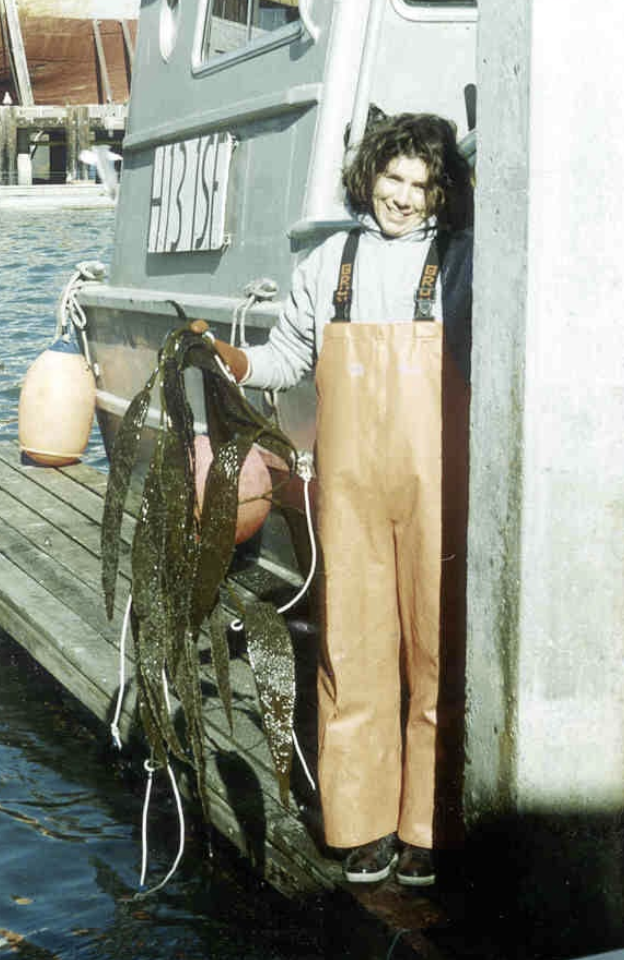
Sara Azat (she/her)
Fish biologist with the NMFS West Coast Region, California Coastal Area Office, San Francisco Bay Branch

Katie Barnas
Research Fisheries Biologist, Conservation Biology Division, Northwest Fisheries Science Center, NOAA Fisheries
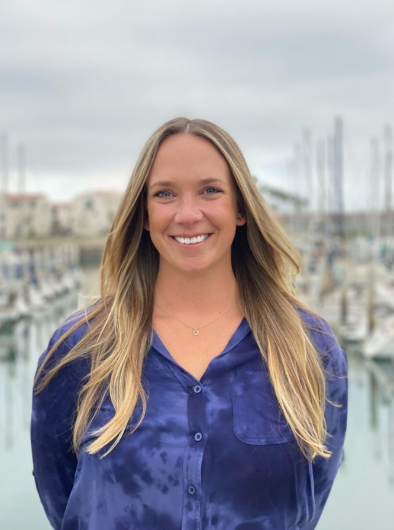
Michaela Miller (she/her)
Conservation Manager, National Marine Sanctuary Foundation
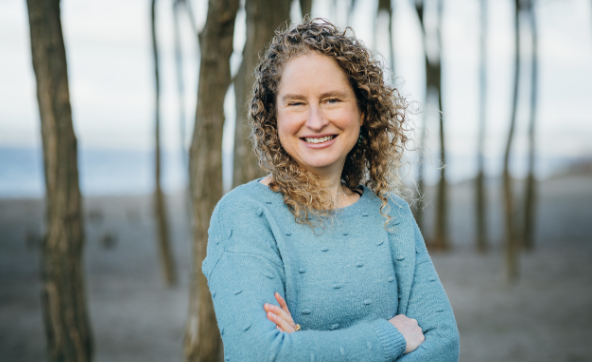
Beth Sanderson (she/her)
Ecosystem Analysis Program Manager with NOAA Fisheries Northwest Fisheries Science Center

Bryant Chesney
Senior Marine Habitat Resource Specialist, NOAA National Marine Fisheries Service (NMFS) West Coast Region
Bryant Chesney is a Senior Marine Habitat Resource Specialist with NOAA’s National Marine Fisheries Service (NMFS) West Coast Region and has worked on a variety of habitat conservation efforts since 2000. Currently, Bryant works in Long Beach, California, and focuses on marine habitat conservation in support of protected species and sustainable fisheries. He is particularly interested in seagrass and rocky reef ecology and conservation. In addition to marine habitat conservation, Bryant supports Protected Resource Division’s efforts to conserve and recover sea turtles, abalone, and other protected marine species. Bryant works closely with regulatory agencies to provide conservation recommendations for coastal development projects that adversely affect estuarine and marine ecosystems in southern California. Specifically, he has experience with port/harbor development, aquaculture, shoreline protection, transportation, dredging, and fill projects. In addition, Bryant has worked with various partnerships to advance conservation and restoration goals by providing leadership, scientific expertise, and policy support.

Elizabeth Gaar
Habitat Program Leader and Senior Policy Advisor for Protected Resources, NOAA Fisheries West Coast Region
Elizabeth is NOAA Fisheries’ West Coast Region Habitat Program Leader and also the Senior Policy Advisor for Protected Resources. In her 35 years with NOAA Fisheries, Ms. Gaar developed and led various components of regional and national habitat and Endangered Species Act (ESA) programs. She served as the first Chief of Endangered Species in the Pacific Northwest (NW) when petitions to list salmon and steelhead under the ESA first emerged and later served as Assistant Regional Administrator for Habitat Conservation, where she established NMFS NW Region’s ESA and Magnuson Stevens Act essential fish habitat regulatory programs. Ms Gaar also served as NOAA’s NW Region Chief of Salmon Recovery, responsible for developing and implementing the Region’s ESA salmon recovery program. Prior to working for NOAA, Ms Gaar was a District Fishery Biologist with the US Forest Service with tenures on both the Siuslaw and Mt. Hood National Forests. She earned her Bachelor’s of Fisheries Science degree from Oregon State University and her law degree from the Northwestern School of Law, Lewis and Clark College. When she is not working, Elizabeth is an avid skier, water paddler, and traveler to Spain where she enjoys time with her children and grandchildren.

Peter Kiffney (he/him)
Research Fish Biologist, Northwest Fisheries Science Center
Peter received his BS in Geology from the University of North Carolina, MS in Aquatic Ecology from University of California-Davis, and Ph.D. from Colorado State University in Fishery and Wildlife Biology and Ecology. After a two-year postdoctoral fellowship at the University of British Columbia in the Department of Forest Sciences he joined NOAA as a research scientist in 1998 in the Watershed program. His research focuses on linking science with management and interests include: food web ecology; juvenile salmon ecology, focusing on factors limiting growth, movement and survival; and the ecology and management of nearshore habitats especially submerged aquatic vegetation. Peter is one of the project’s principal investigators, helping with project coordination and the evaluation of habitat functions of nearshore habitats and the science behind the various models, tools, and calculators used to assess impacts of various human activities on nearshore habitats.

Jessie Hale (she/her)
Postdoctoral Fellow with the National Marine Sanctuary Foundation, in support of NOAA Fisheries (embedded at the Northwest Fisheries Science Center)
As a postdoctoral fellow on the project and lead on our Science Input Team, Jessie is working to identify, assess, and strengthen submerged aquatic vegetation ecological valuation tools with project partners. Jessie is also on our Engagement Team, working to share the work of our partnership, and is co-authoring a literature review on ecological valuation and equivalency analysis methods with project partners. Jessie’s dissertation research examined sea otter population dynamics and foraging ecology on the outer coast of Washington. Her other past research was on Hawaiian monk seal foraging, pinto abalone tagging methods, and the effects of invasive bullfrogs and novel habitats on invertebrate communities in Arizona. Jessie is passionate about marine ecology and studying species and habitats with conservation need where her research has direct management applications.

Dayv Lowry
ESA Assessment Biologist and Rockfish Recovery Coordinator, NOAA Fisheries, West Coast Region, Protected Resource Division
Dayv holds a B.S. in Marine Biology from Hawai’i Pacific University, a PhD in Biology from the University of South Florida, and worked for the Washington Department of Fish and Wildlife for nearly 15 years before coming to NOAA in 2021. Dayv is the Rockfish Recovery Coordinator, overseeing all aspects of recovery plan implementation for yelloweye rockfish and bocaccio. He is also leading the process to evaluate the sunflower sea star for listing under the ESA, and has served on teams to evaluate the shortfin mako shark and other non-mammal, non-salmon species on the West Coast. Dayv serves on scientific advisory boards for the Pacific Marine and Estuarine Fish Habitat Partnership, the Puget Sound Partnership, the Puget Sound Recovery Funding Board, the Northwest Association of Networked Ocean Observing Systems, and the Puget Sound Estuarium. For this project, Dayv is serving as a voice for valuation tool end users who perform Section 7 consultations, as well as a member of the Engagement Team.

Stephanie Ehinger
Biologist with the National Marine Fisheries Service, West Coast Region, Central Puget Sound Branch, Habitat Division.
Stephanie Ehinger received her Diploma in limnology for Konstanz University, Germany. She has been working as an ESA-consultation biologist with the National Marine Fisheries Service in Lacey, WA since 2000. Her subject matter expertise includes Endangered Species Act consultations, conservation/mitigation banking, and habitat quantification to facilitate mitigation. She led the team that developed the Puget Sound Nearshore Calculator that is being used jointly with the USFWS and USACE in Puget Sound to quantify impacts and benefits from proposed nearshore actions. For this project, she contributes her expertise in design and use of habitat quantification tools and the specific needs of those tools for Endangered Species Act consultations.

Natalie Cosentino-Manning
Marine Habitat Restoration Specialist, National Marine Fisheries Service, Office of Habitat Conservation, Restoration Center, Santa Rosa CA
Natalie has worked at the Restoration Center for over 20 years. She specializes in the restoration of rocky intertidal, nearshore, and estuarine habitats. In addition, she has experience in assessing impacts from contaminant releases to submerged aquatic vegetation, and subtidal habitats in CA and the Gulf of Mexico. She has a B.S. from Cal Poly Humboldt University, and a M.S. in environmental science and management from the University of San Francisco. For this project, she contributes her expertise in the use of habitat quantification tools used in the response, assessment and restoration of injured habitats.

Steve Marx
Senior Officer, Pew Charitable Trusts
Steve Marx leads Pew’s efforts to protect ecologically important coastal and nearshore marine habitat on the U.S. West Coast. He also works to advance implementation of ecosystem-based fishery management in the Pacific and North Pacific. A native of coastal Alaska, Marx has extensive experience working on commercial fishing vessels and recreational charter boats. He holds a bachelor’s degree in international affairs from Lewis & Clark College and a master’s degree in public administration from Portland State University. Marx provides support for implementation of this SAV focused project through his role on the steering committee and engagement team, and helps to identify management and policy connections to better protect these important habitats.

Sara Azat (she/her)
Fish biologist with the NMFS West Coast Region, California Coastal Area Office, San Francisco Bay Branch
Sara completed her B.S. degree in Ecology, Behavior and Evolution at UC San Diego, and her M.S. in Marine Biology at San Francisco State University. Sara worked at California Department of Fish & Wildlife on the Pacific herring fishery and Marine Life Protection Act for ten years before starting work with the NMFS San Francisco Bay Branch in 2012. Sara works on Endangered Species Act and Magnuson Stevens Act essential fish habitat consultations, mitigation and conservation banking, and implementation of the California Eelgrass Mitigation Policy. For this project, Sara brings experience in utilizing tools during consultation, and interest as an end user looking to improve the tool input information.

Katie Barnas
Research Fisheries Biologist, Conservation Biology Division, Northwest Fisheries Science Center, NOAA Fisheries
Katie joined the NWFSC in 2001. She works on questions related to ESA listed salmon recovery, non-native species impacts on salmonids, and freshwater and estuarine habitat restoration. She has a B.S. from Bates College in Biology and a M.E.M from Duke University in Coastal Environmental Management focused on hurricane impacts on coastal and estuary habitat and fisheries. For this project, she contributes her skills in project coordination, estuary and nearshore habitats, and habitat restoration.

Michaela Miller (she/her)
Conservation Manager, National Marine Sanctuary Foundation
Michaela Miller joined the National Marine Sanctuary Foundation (Foundation) in December 2021 as the Conservation Manager. The Foundation is the official non-profit partner for the federal national marine sanctuary system, and the Foundation’s conservation program focuses on marine debris removal, wildlife conservation, and habitat restoration. Michaela has a background in environmental science with experience in coastal and marine science, policy, and resource management. At the Foundation, she is responsible for developing and implementing projects and programs by identifying and researching science, conservation, and restoration needs and opportunities at the different sanctuary sites and across the National Marine Sanctuary System. For this project, Michaela provides support for the implementation of this project through her role co-leading the engagement team to better communicate results of the project and to engage external non-NOAA partners in this work. Michaela earned a MS in Applied Marine and Watershed Science from California State University Monterey Bay and a BS in Environmental Science from California State University Channel Islands. Michaela lives in Ventura, California with her dog Mav.

Beth Sanderson (she/her)
Ecosystem Analysis Program Manager with NOAA Fisheries Northwest Fisheries Science Center
Beth Sanderson is a research fisheries biologist at NOAA’s Northwest Fisheries Science Center in Seattle, WA. She received a Ph.D. in Zoology from the University of Wisconsin and a B.A. in Biology and French at Central College. Currently, Beth leads the Ecosystem Analysis Program, a diverse group of scientists who combine field sampling and mathematical analysis to understand species interactions, climate change, land uses, and how other factors affect the Pacific Northwest ecosystems. Beth’s own research spans ecosystems from headwater streams in Idaho where salmon swim nearly 1000 miles to spawn to nearshore areas in the marine environment where shellfish aquaculture and eelgrass co-mingle. Beth is one of the project’s principal investigators, helping to guide and coordinate our team approach to strengthen the science and management of Pacific coastal nearshore ecosystems that support SAV and associated food webs.
Contact Us
Need to get in touch?
nearshore.save@noaa.gov

